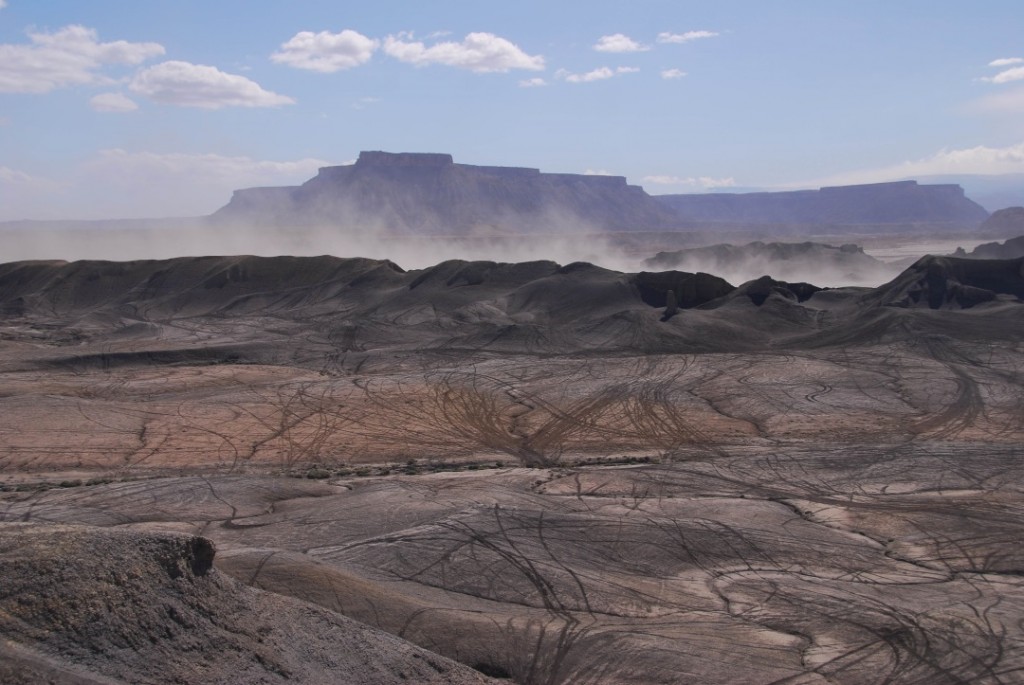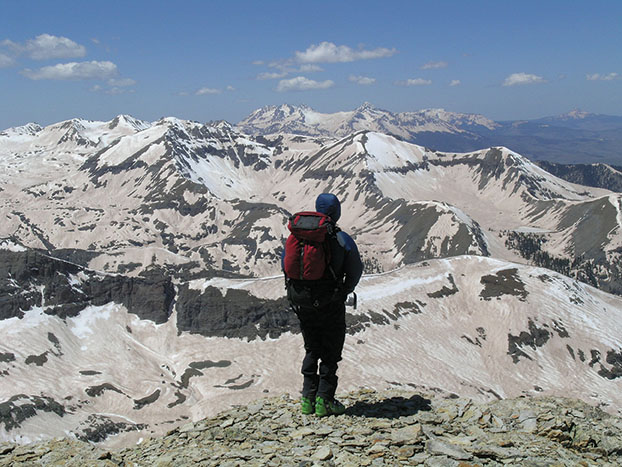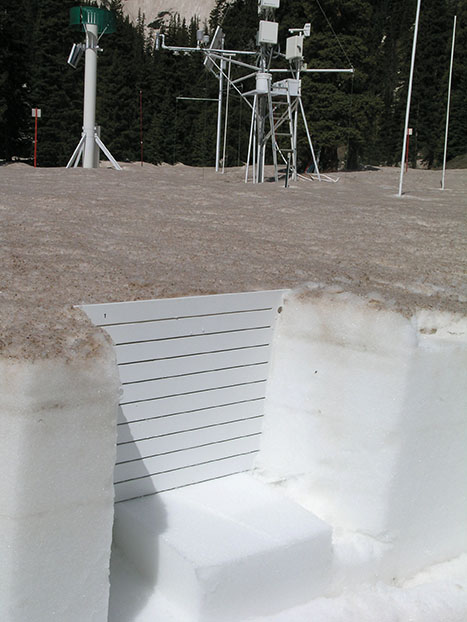Windborne Dust from Disturbed Desert Soils is Contributing to Early Snowmelt in the Colorado Rockies
What threatens the health of Colorado’s snow pack, reduces Colorado River flows, and will be made worse by the future effects of climate change? And what can you do to help address this threat?
Quick answers:
- Red dust falling on white snow.
- Write the Interior Department or the Colorado delegation and ask them to protect Colorado snow pack and Colorado River flows by limiting unnecessary surface-disturbing activities on BLM land, especially lands in Utah proposed for wilderness designation.

Background: An increasing body of scientific research indicates that windborne dust from disturbed desert soils is contributing to early snowmelt in Colorado, and consequently reducing water flowing in the Colorado River by five percent.
Here’s how it works: Wind storms pick up desert soils from the Colorado Plateau and Great Basin that have been disturbed by activities such as “grazing, drought, fire, plowing or vehicles”[1] and deposit it on mountain snow pack throughout the Upper Colorado River Basin. Amazingly, dust is being deposited at rates approximately five times those of the era predating European settlement. When that dust lands on snow it causes enhanced absorption of solar radiation – just like wearing a dark t-shirt outside on a hot sunny day. Research shows, for example, that in 2005 and 2006, dust deposition caused snow cover to melt 18 to 35 days earlier in the San Juan Mountains of western Colorado and in 2009, approximately 48 days earlier.

Why is early snowmelt a problem? Perhaps most dramatic, scientific research shows that annual runoff in the Colorado River is decreased by five percent on average compared to pre-European settlement levels. This is due to evapotranspiration (water transpiring from plants and soils that normally would not be exposed yet) and snow sublimation (snow turning to water vapor). The loss adds up to over 35 billion cubic feet – enough water to supply Denver for two years or Los Angeles for eighteen months! We can’t afford to be losing this precious water supply, especially because various models predict that climate change will cause a 7 to 20 percent reduction in current runoff in the Colorado River Basin.
Early snowmelt also causes peak runoff (measured for the Colorado River near the Utah/Arizona border) to occur on average three weeks earlier than it would without the impact of dust, likely diminishing the amount of water available later in the season when it’s needed the most. And early snowmelt may threaten Colorado’s ski industry.

Scientists say the Colorado Plateau – which includes the red rock wild lands of southeastern Utah – and the Great Basin are the likely major source of dust on snow in the Upper Colorado River Basin. And while the existence of dust is a natural phenomenon, research shows that activities that destabilize soils (such as off-road vehicle use, grazing and oil and gas development) greatly increase the susceptibility of desert soils to wind erosion.
What is needed: The best way to reduce windborne soil erosion is to prevent surface-disturbing activities on fragile desert soils. Because the Bureau of Land Management (BLM) manages such vast tracts of land on the Colorado Plateau and Great Basin, the agency could make a significant contribution to dust reduction by reducing soil-disturbing activities such as ORV use, grazing and energy development where possible. Protecting BLM wild lands in Utah would be a good first step in the right direction, because such protection would prevent some soil-disturbing activities while preserving spectacular landscapes.
[1] Thomas H. Painter, Jeffrey S. Deems, Jayne Belnap, Alan F. Hamlet, Christopher C. Landry, and Bradley Udall. Response of Colorado River runoff to dust radiative forcing in snow. Proceedings of the National Academy of Sciences, 2010; DOI: 10.1073/pnas.0913139107

